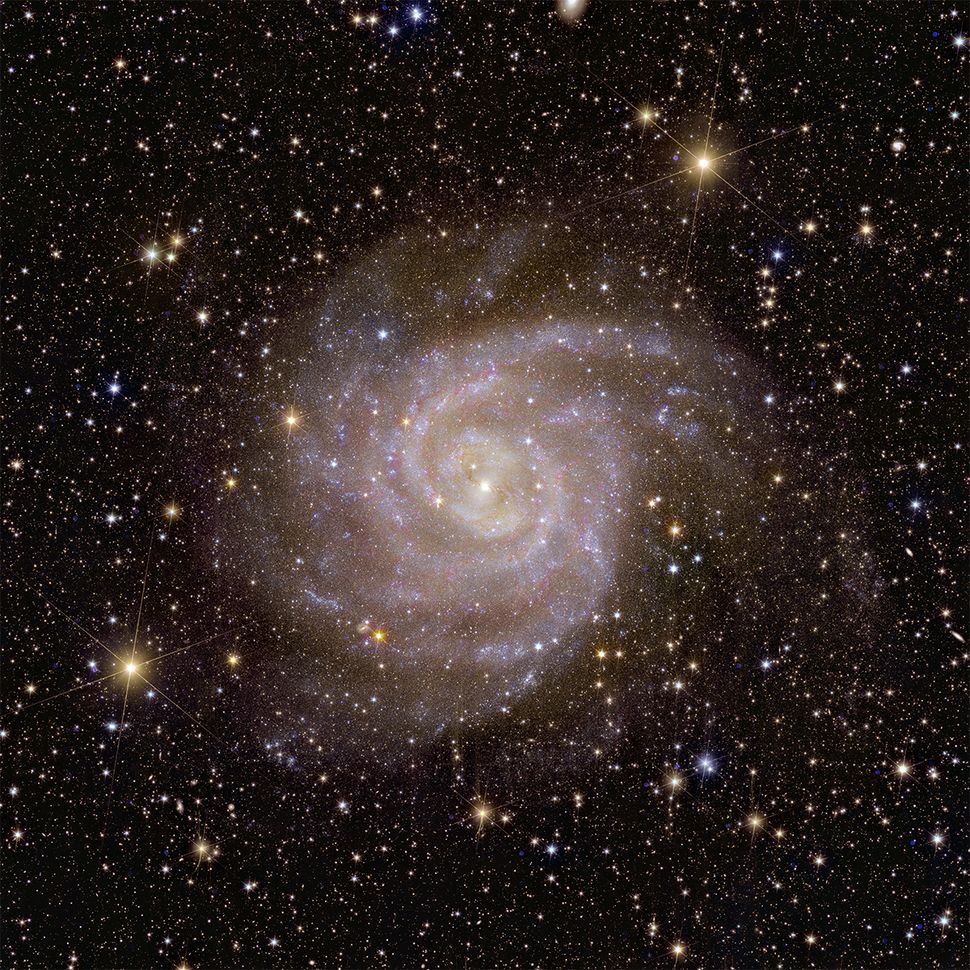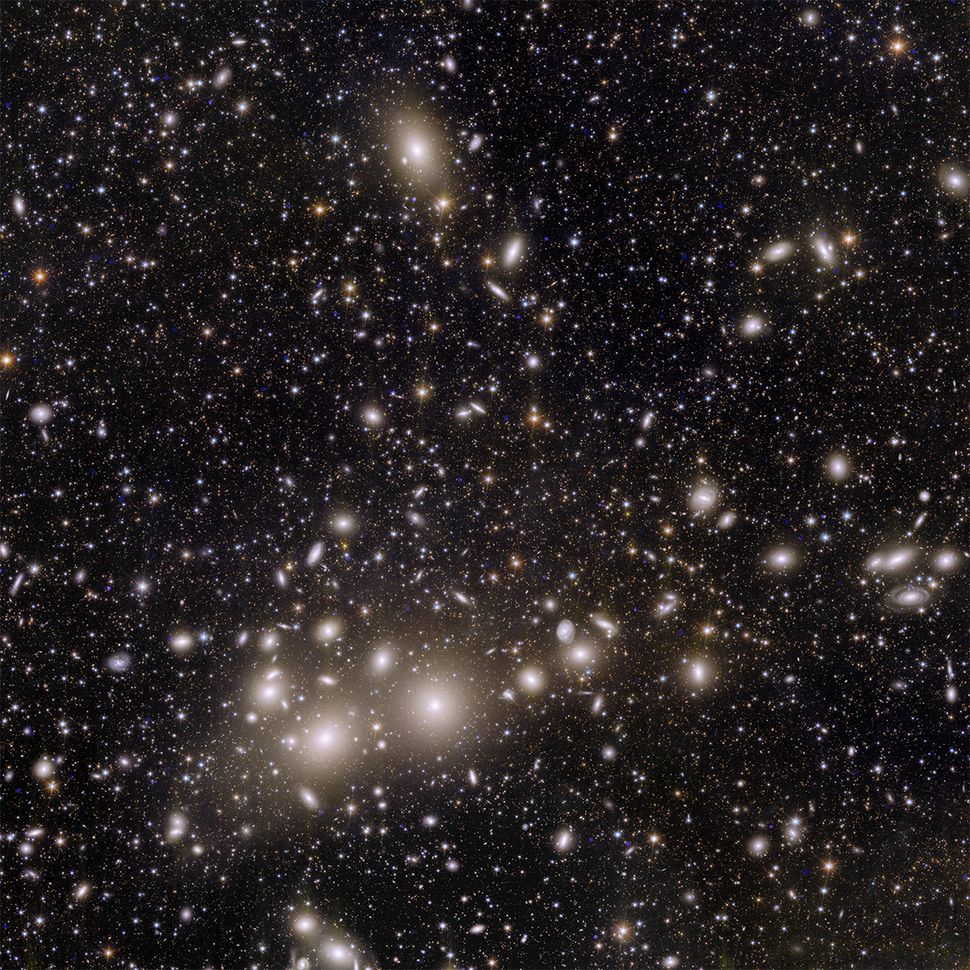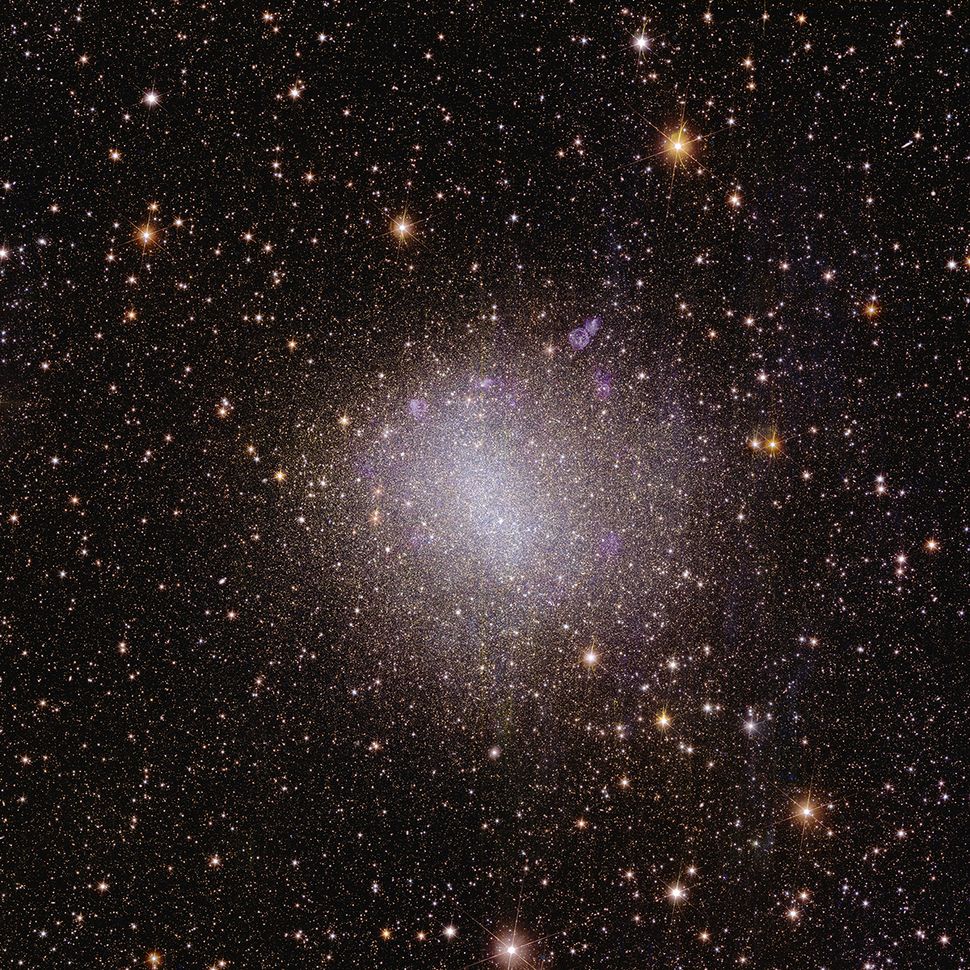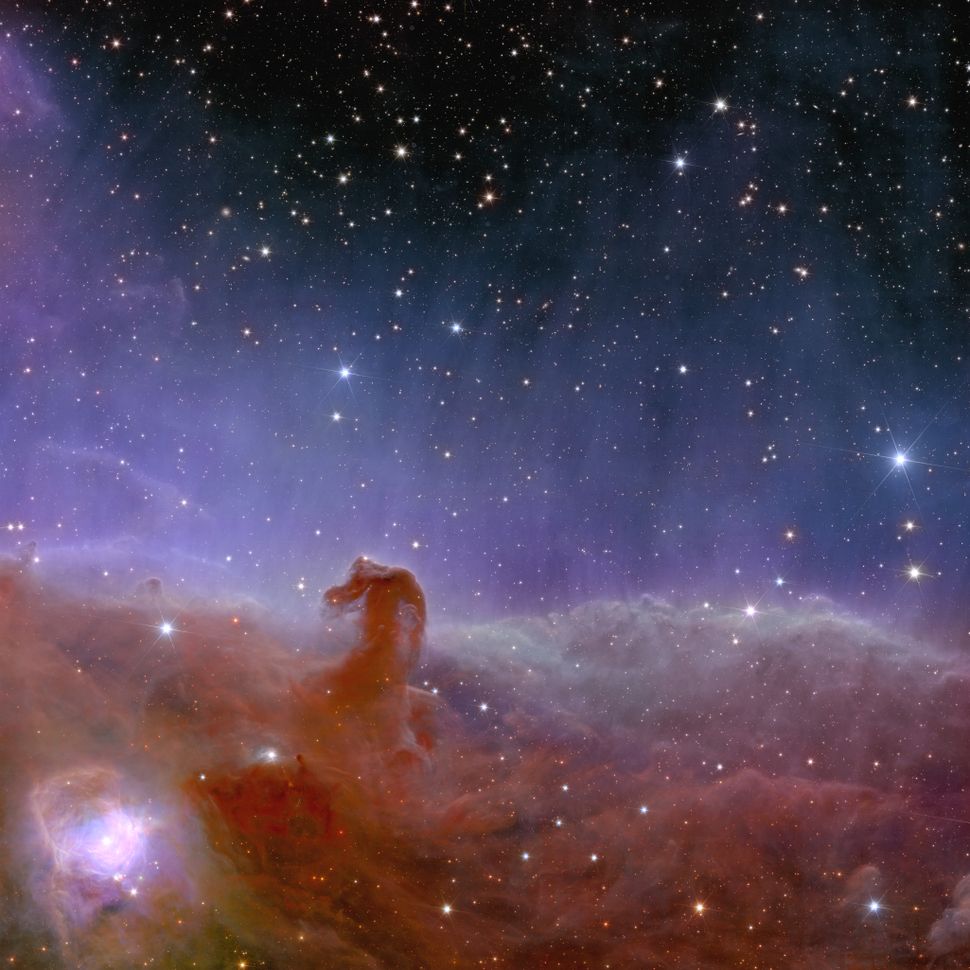If you have been following space news recently (Space.com is quite a nice website), you might have heard about the launch of the Euclid telescope by the European Space Agency (ESA). This the first-of-its-kind telescope's main objective is to map the universe and look for signs of dark matter and dark energy.
It had faced some teething problems initially, when one of its booster was reflecting heat and light onto the body, causing the images to get fainter, but it became fully functioning recently and has sent its first batch of images.
Let us now dive into some of its first full-colour images-
Euclid Spots the 'Hidden Galaxy'

|
|
This is a spiral galaxy, IC 342, residing about 11 million light years
away from Earth. Image credit: ESA |
This spiral galaxy has been nicknamed the 'Hidden Galaxy' because it is obscured from out vision by cosmic dust from the Milky Way. It covers an area equal to that of a full moon and would have been one of the brightest objects in the night sky, had it not been obscured by the gas and dust.
Euclid was able to use its near-infrared instrument to peer past the cloud and obtain this image.
Say Hello to the Perseus Cluster

|
| Image Credit: ESA |
In this image, more than a 1,000 galaxies can be seen in the Perseus Cluster, which lies about 250 million light years away. The largest of these galaxies can be clearly seen with a bright halo of light around them. Note the way in which the stars appear to be elongated, due to the refraction of light many times.
Other faraway galaxies can be seen in this picture as many specks of white, red and yellow light. Astronomers are interested in finding and identifying more such faint galaxies as recent calculations suggest that there are more of these than what astronomers previously thought.
NGC 6822 Catches the Barbie Fever

|
| Image credit: ESA |
See the Horsehead Nebula in New Detain

|
| Image Credit: ESA |
The final image for today is that of the famous Horsehead Nebula, a large, dark molecular cloud about 1,500 light-years from Earth in the constellation Orion.
As you can. see, the clouds around the pillar are already disappearing, scientists say that the pillar itself will dissipate in the next 5 million years.
Scientists hope to find more baby stars and Jupiter-like exoplanets in this region too, using this marvellous telescope.
That is all I have for you today. Hope you enjoyed this post and the
stunning images taken by Euclid. Bookmark this tab and keep visiting
regularly to find more such space news. Also don't hesitate to click the
follow button and share this blog with friends and family.
Cheers,
Aarav Iyer
References:
(1) https://www.space.com/dark-matter-euclid-mission-first-breathtaking-images
(2) https://www.esa.int/Science_Exploration/Space_Science/Euclid_overview
.png)

hii bhaiyya 👋👋👋 welcum back........kaise ho ap ???
ReplyDeleteus wale mein bhi kuch dal do to
ReplyDelete